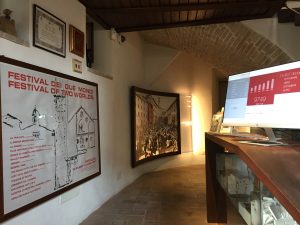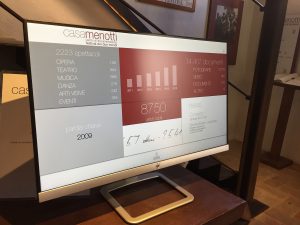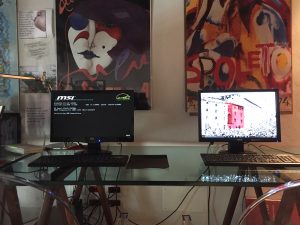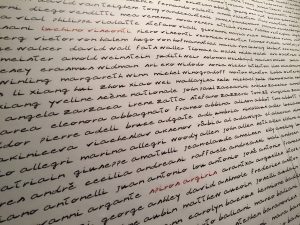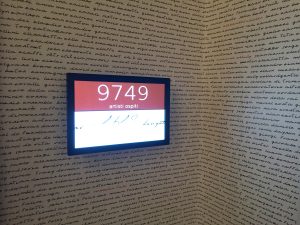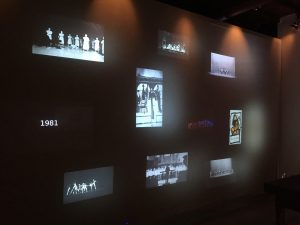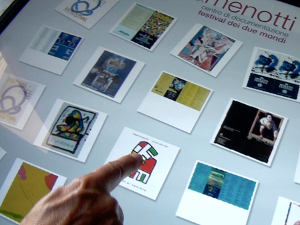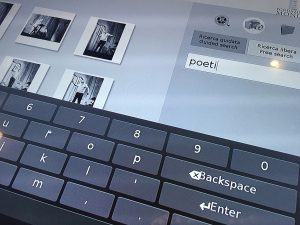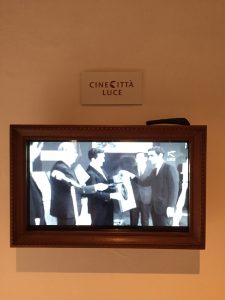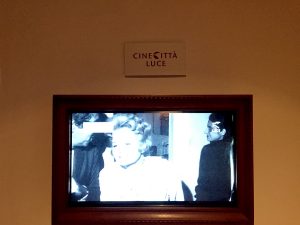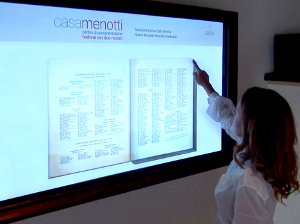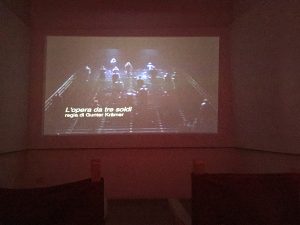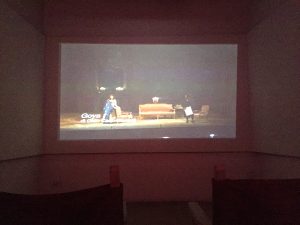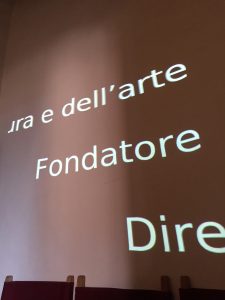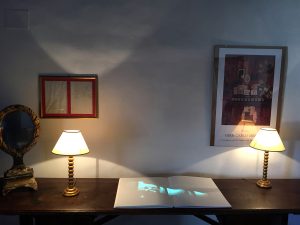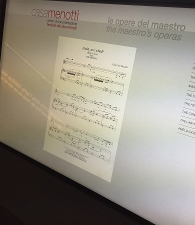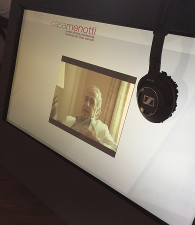THE DOCUMENTATION CENTER OF THE FESTIVAL OF TWO WORLDS
It is a year-round open space, suitable for different degrees of in depth researches.
There are spaces dedicated to the Festival’s history, to the figure of Maestro Gian Carlo Menotti, and links between the city of Spoleto and its international cultural context.
An interactive multimedia set-up shows the main themes related to the Festival of Two Worlds and its founder, Maestro Gian Carlo Menotti.
Visitors have the opportunity to enjoy contents and documentary material of historical, cultural and artistic high value. There is also an interactive itinerary between the various floors of the house.
Through the use of a high-tech, multimedia interactive scenic design relives the atmosphere of the Festival with its music, dance, theatre, screenplays, international connections, well-known faces, timeless images.
Multimedia installations and shared spaces
ground floor
Entrance and statistics monitor
The first information device is located in the reception: there is a monitor where the statistical data are constantly updated, developed through a computer system that shows the amount of archive material organized by type of media, type of show, the number of artists, and the previews of the events scheduled at “Casamenotti”.
mezzanine
Research Station
This is the place for more detailed researches into the materials that make up the digital archive of the Documentation Center of the Festival of Two Worlds.
Free access is available to scholars, researchers and students from all over the world, upon request.
first floor
Name wall
The space is entirely dedicated to the artists who have participated in the Festival of Two Worlds. Names of artists, theatre groups, orchestra conductors, dancers, poets, writers, directors, playwrights, musicians, decorate the walls of the entire room.
Multimedia wall
A large wall in the main room offers a gallery of the impressive array of shows and events that have been held throughout its various editions: the database of the system generates, at regular intervals, a “keyword” (e.g., “1981”) randomly matching photos and images appear.
Multimedia table
In the same room, visitors have the opportunity to “enter” the large digital archive of the Documentation Center.
Using the interactive touch screen, one can easily navigate any kind of personalized search, ranging from categories, to names, dates, and places.
Istituto Luce “The Educational Film Union”
A fully dedicated monitor gives visitors the opportunity to see the vast audio-visual material that the Istituto Luce has produced in the early years of the Festival of Two Worlds. There are journalistic and costume reportages that are very interesting to understand the cultural and social climate of its adventurous beginnings.
Souvenir and Book shop
The “Souvenir” which the Festival has been publishing since the beginning, are valuable editorial testimonies of every single edition. They show the program and the casts in detail.
A virtual library offers the possibility to search the years you want to view. Consultation is possible by “browsing” on a large interactive screen.
Projection Room
In the next room, a large screen shows a careful selection of the most important events from the entire history of the Festival of Two Worlds. The visitor is able to see the original recordings of theatrical productions – prose, concert, opera and ballet – from the first edition up today.
Second Floor
Words
In one of the rooms dedicated to the great Maestro, stands out the wall where the “key words”, generated by the database of the archive system, are displayed. Dates, titles of works and compositions, various roles and awards received by Menotti during his long career: ideas and hints to deepen the understanding of the great musician and artistic director.
Piano Room
This was the musical space of Maestro Menotti, here there is his piano and everything around speaks about him and his art. In this space take place the concerts that animate the Documentation Centre all year long.
Virtual Book
It is possible to browse a virtual photo album, a story made of the memories of Gian Carlo Menotti, that traces the main stages of his life and his artistic journey, and, consequently, of his most famous creation, the Festival.
Music Stands
In the three monitors placed on music stands, the composer’s career can be interactively viewed through: 1. Pieces of music composed during the various editions of the Festival; 2. Musical scores of his compositions; 3. interviews that Menotti released to networks around the world over the years.
The Maestro’s Room
We are in the Maestro’s bedroom where an audiovisual projection envelops the visitor to create a moment of reflection and concentration, favored by suggestive images and sounds: his works, the solemnity of his music and that of the town of Spoleto that has always intimately hosted them.
